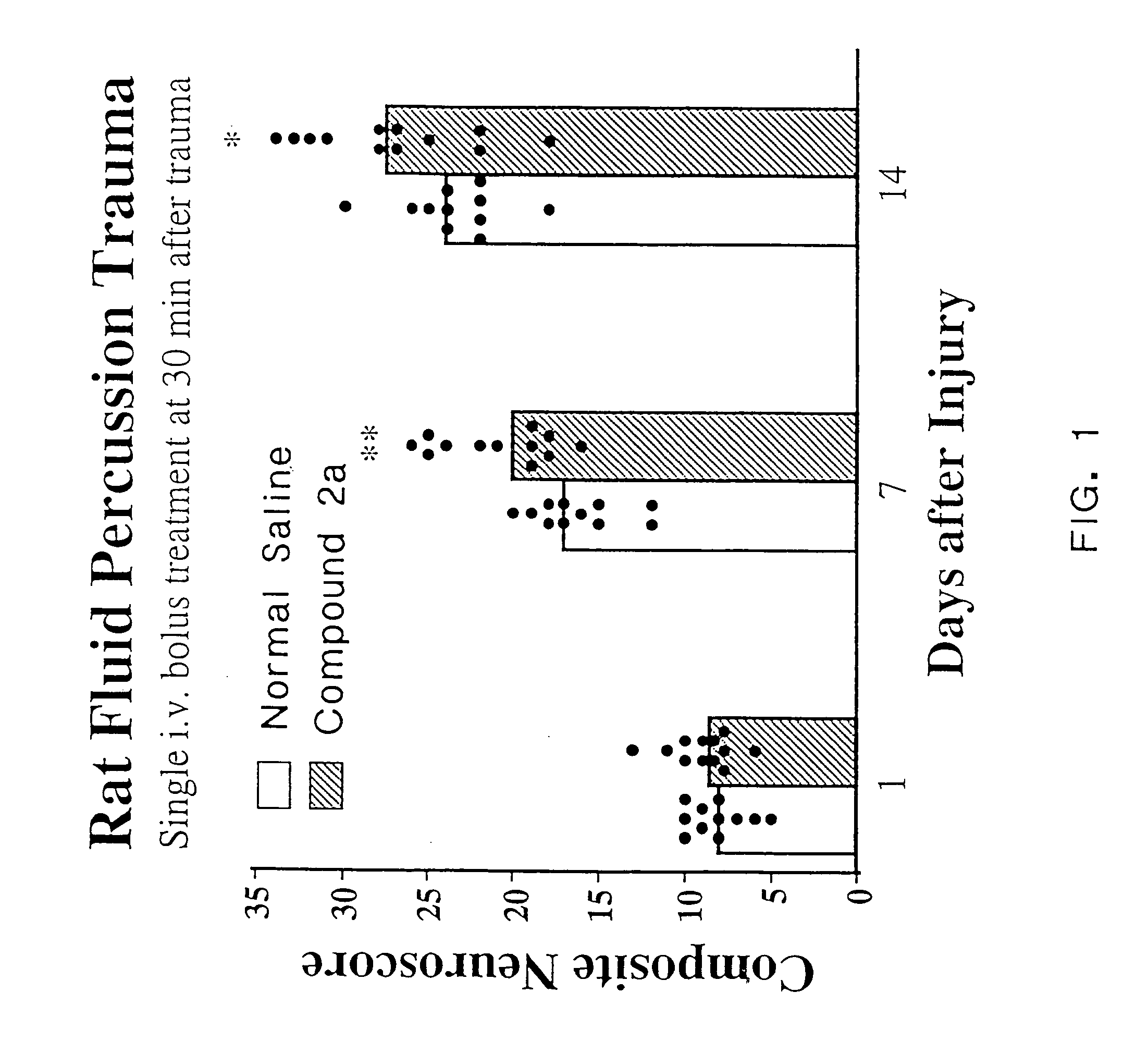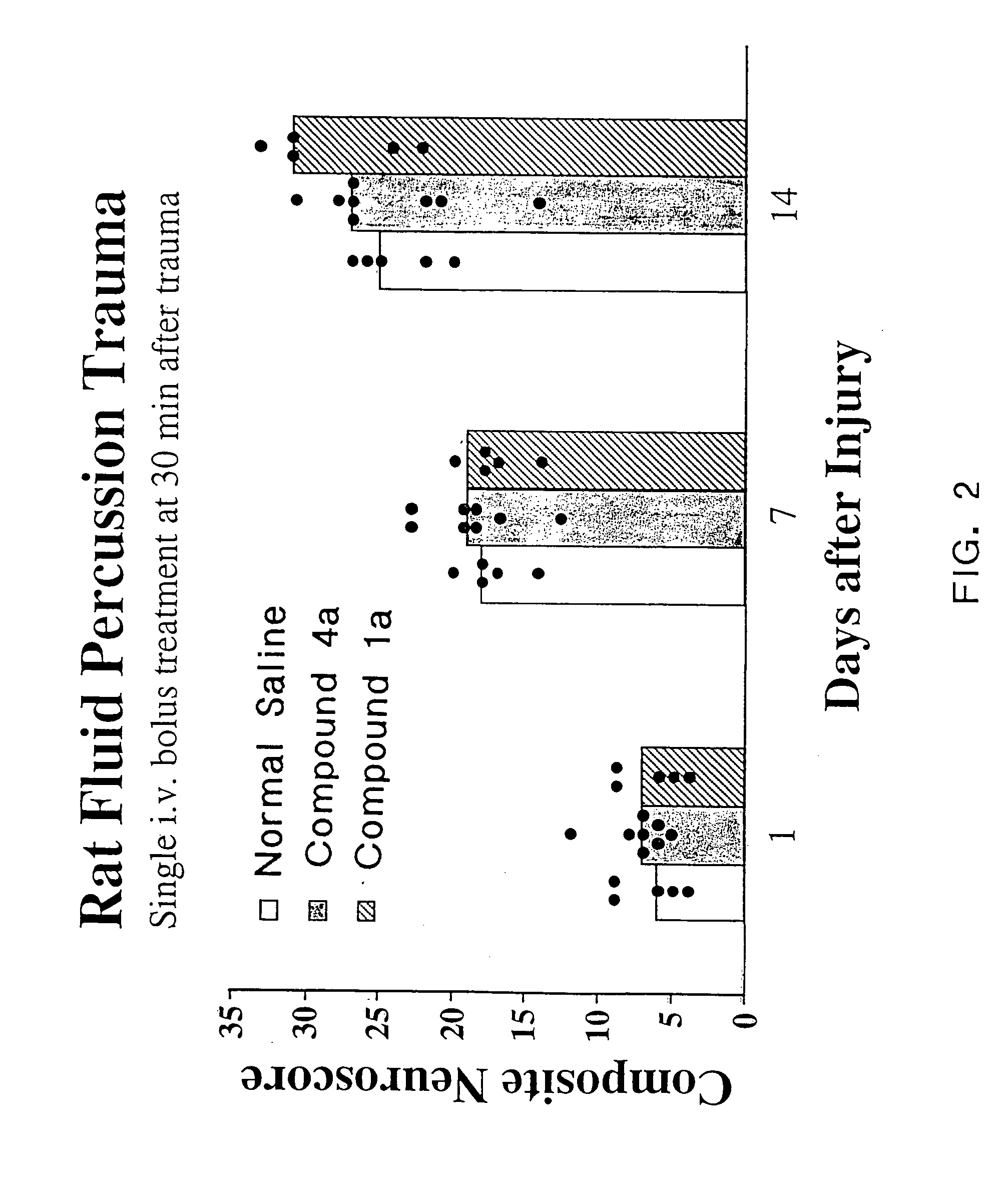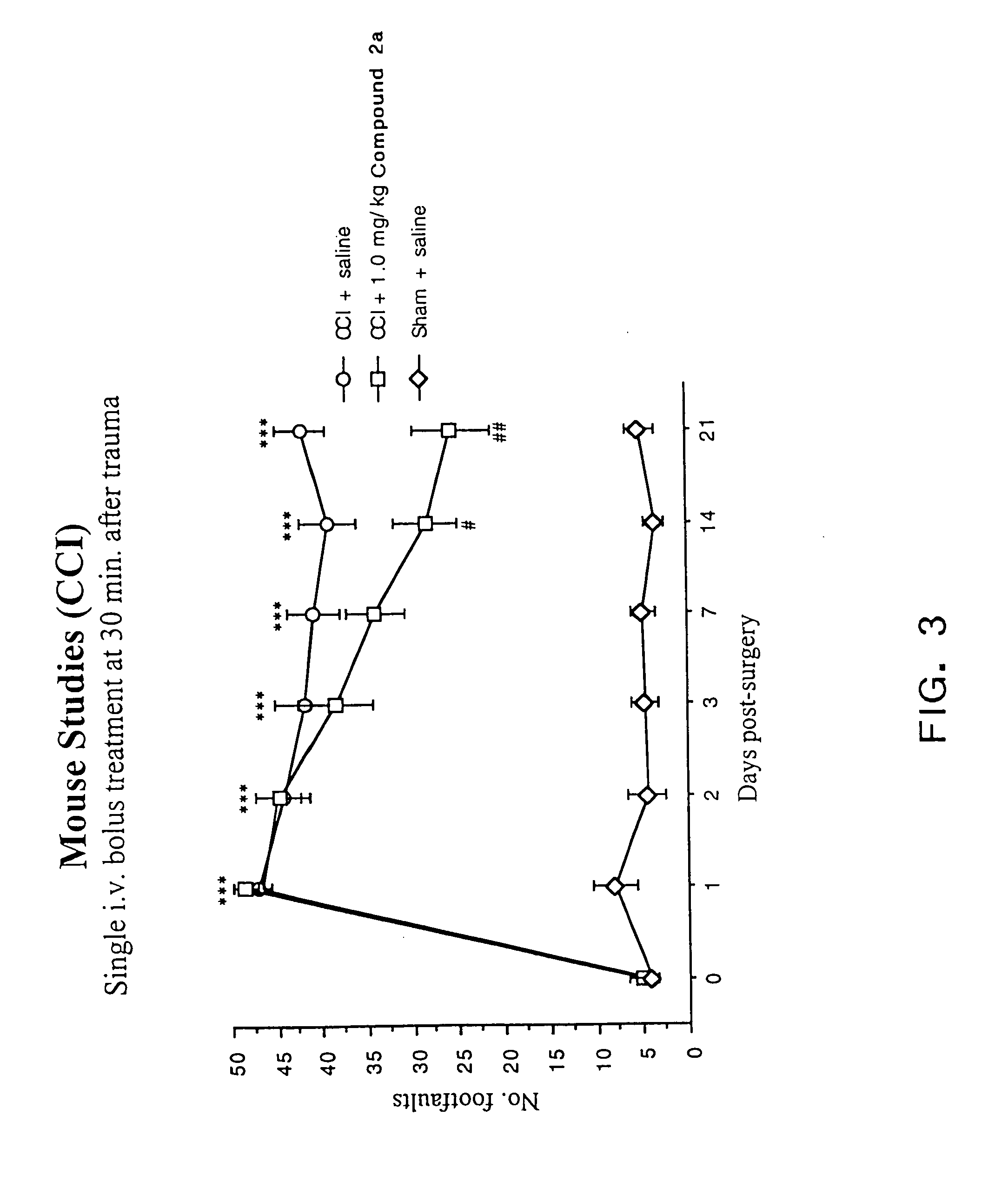Cyclic dipeptides and azetidinone compounds and their use in treating CNS injury and neurodegenerative disorders
a technology of azetidinone and dipeptides, which is applied in the direction of peptides/proteins, drug compositions, peptides, etc., can solve the problems of inability to protect neurons, inability to effectively treat neurological disorders such as alzheimer's disease, and inability to effectively protect neurons, etc., to achieve strong central nervous system activity and enhance cognitive function
- Summary
- Abstract
- Description
- Claims
- Application Information
AI Technical Summary
Benefits of technology
Problems solved by technology
Method used
Image
Examples
Embodiment Construction
[0087]As discussed in the Background section, a major drawback of TRH as a compound to treat CNS trauma is its short plasma half-life (4–5 min.), which is thought to be due to rapid degradation of the peptide in vivo. Cleavage of the pyroglutamyl moiety of TRH by peptidases causes formation of the cyclic dipeptide metabolite cyclo(His-Pro). However, while cyclo(His-Pro) and other cyclic dipeptides are known to exist in nature, very few of these compounds have been tested for biological activity in mammals. Of those that have been tested, only a limited number exhibit any biological activity. In particular, none of the cyclic dipeptides are known to exhibit neuroprotective effects or to enhance working and learning memory following acute or chronic brain injury, or to treat neurological diseases such as brain or spinal cord trauma, stroke or neurodengerative disorders such as Alzheimer's disease (for a review of known cyclic dipeptides and their respective activities, see, Prasad, 19...
PUM
| Property | Measurement | Unit |
|---|---|---|
| pressure | aaaaa | aaaaa |
| temperature | aaaaa | aaaaa |
| velocities | aaaaa | aaaaa |
Abstract
Description
Claims
Application Information
 Login to View More
Login to View More - R&D
- Intellectual Property
- Life Sciences
- Materials
- Tech Scout
- Unparalleled Data Quality
- Higher Quality Content
- 60% Fewer Hallucinations
Browse by: Latest US Patents, China's latest patents, Technical Efficacy Thesaurus, Application Domain, Technology Topic, Popular Technical Reports.
© 2025 PatSnap. All rights reserved.Legal|Privacy policy|Modern Slavery Act Transparency Statement|Sitemap|About US| Contact US: help@patsnap.com



